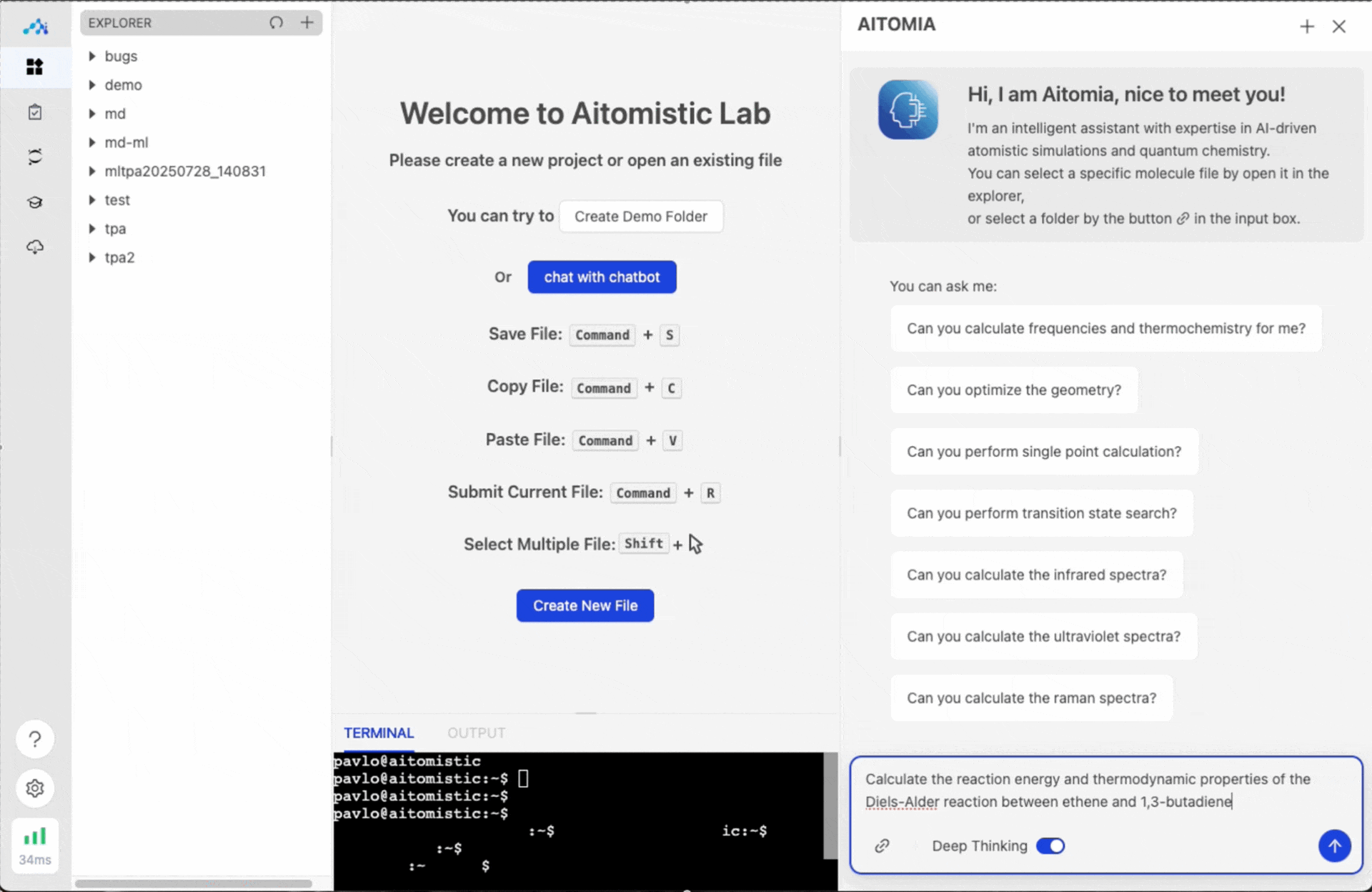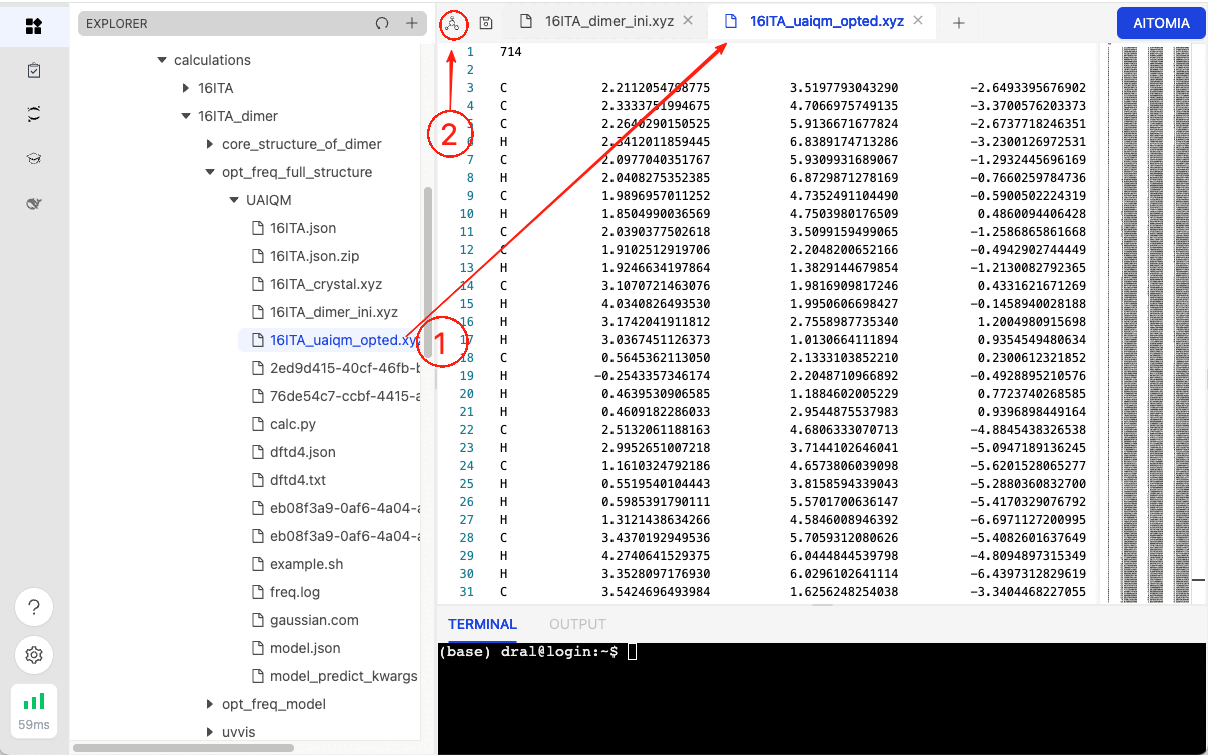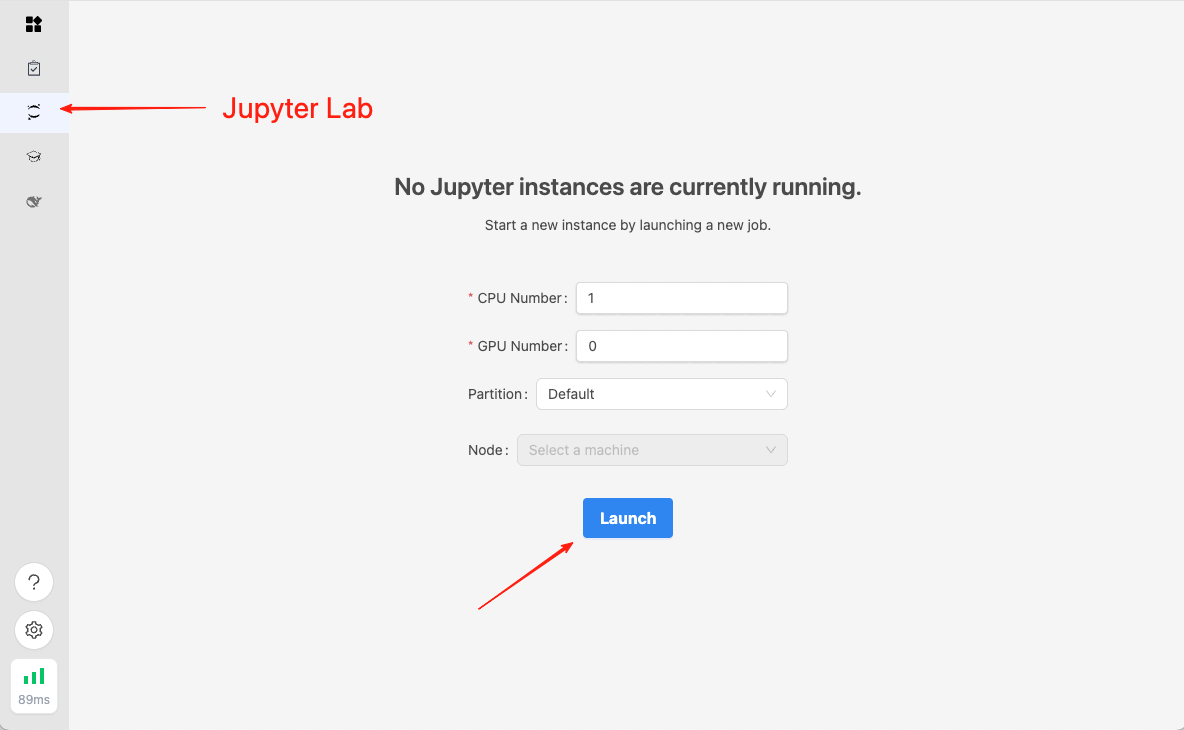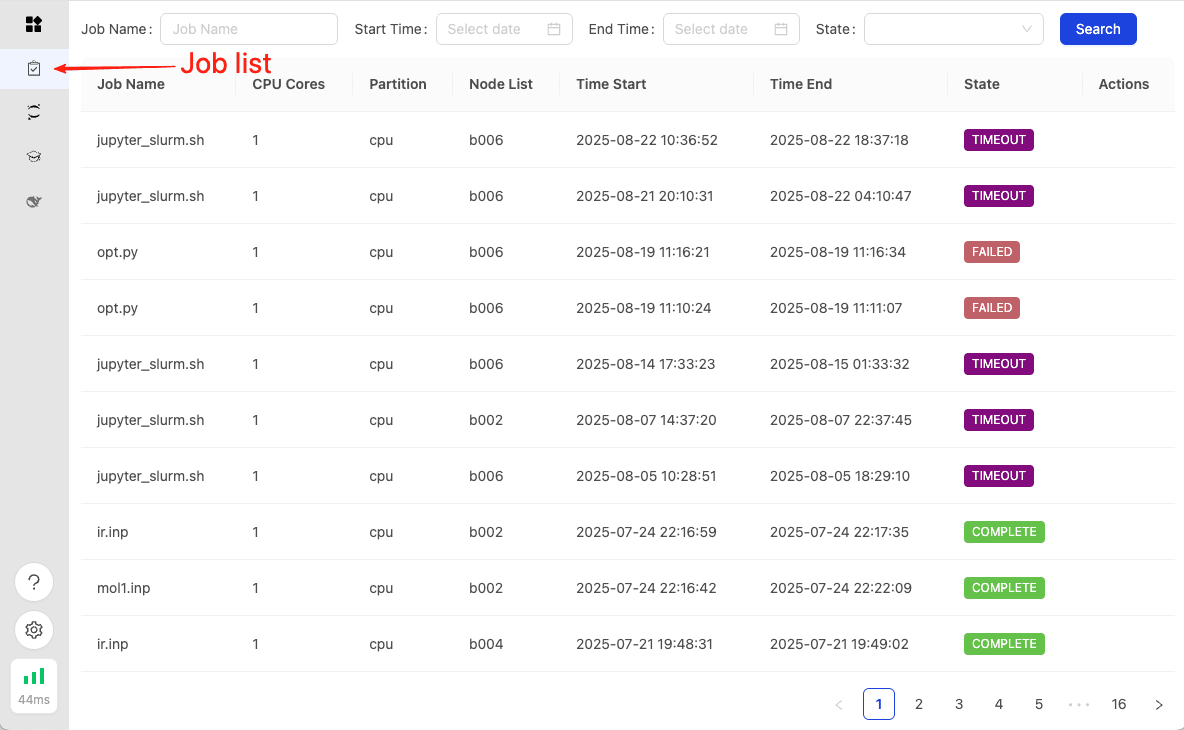Aitomistic Hub – On-Demand Online Resources for Your Aitomistic Simulations
Our mission is to deliver the most advanced tools for AI-driven atomistic (aitomistic) simulations in the easiest possible way, via a web browser accessible on any device. This is what Aitomistic Hub is for: it has the most comprehensive integration of AI in all stages of atomistic simulations, where AI is using AI to do simulations! You can chat with AI to help you design and set up simulations using AI and quantum mechanical tools, such as accurate and fast machine learning models and DFT methods, and perform and analyze the simulations. Aitomistic Hub is also equipped with GUIs, a file explorer, an input file and Python script submission, a terminal, and Jupyter Lab. See below a brief overview of the main features.
On the Hub, you can run aitomistic simulations without installing any software and collaborate with your colleagues. Aitomistic Hub is a perfect starting point, with learning materials and free trial resources subject to their availability. We understand that the trial resources might not satisfy your aitomistic simulation needs. Hence, we offer flexible solutions based on your requirements and resources. You may choose appropriate subscriptions to more resources, i.e., CPU and GPU time, storage, and unlocking more features.
If you like Aitomistic Hub but want to use your hardware resources with the local, customized, and private version of Aitomistic Hub, we have got you covered too! Check out our Aitomistic Lab powering the Hub.
Last, but not least: do you have a cool software that you want to showcase to others and make available for calculations online? Contact us, and it might be integrated into the Aitomistic Hub.
Performing simulations via chatting
Now you can perform even very complex aitomistic simulations simply by telling our Aitomia, an AI agentic expert, what you want to do. Aitomia enables autonomous computational chemistry with AI. You do not even need to learn extensive tutorials or manuals of MLatom, which is in the core of the Hub! Below is an example, where we asked Aitomia to calculate reaction energy and thermodynamic properties of the Diels–Alder reaction between ethene and 1,3-butadiene. It did all the simulations without us providing even an initial guess for xyz coordinates or telling what the product is and delivered accurate results within minutes without any human assistance:

Integrated file explorer and job submitter
You can create new directories and files or upload them from your computer to the Aitomistic Hub. It is easy to organize your files and find what you want! Once you have input files or Python scripts ready, you just open them and click on the run button. You can also adjust the submission settings, i.e., select the specific node (even with a GPU), choose the number of cores, etc.

Integrated GUI with common computational tasks
Of course, you do not want to download files every time you need to quickly check the geometry. Now you can simply click on the xyz file, and visualize the molecule online in the embedded GUI. If xyz file is a trajectory - you can see an animation. Once you marvel at your 3D structure, you can check its geometric parameters such as bond lengths and angles and via a couple of mouse clicks request geometry optimization or other typical computational tasks.

Jupyter Lab
You can also launch Jupyter Lab giving you easy access to the tools convenient for AI method development and analysis.

Job status
Once the job is submitted, you can monitor its status in the OUTPUT tab of the Explorer or open the Job list.



